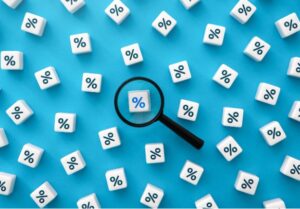If you’re feeling overwhelmed by credit card debt, personal loans, or other unsecured debt, you’re not alone. Many Canadians face the same challenge and are seeking a way to get back on track without resorting to bankruptcy. One option worth considering is a debt management program (DMP).

A debt management program is a structured repayment plan developed through a nonprofit credit counselling agency. It combines your unsecured debt into one affordable monthly payment, often with a reduced (sometimes even zero percent) interest rate. With only a single payment to manage, it makes it simpler to handle your finances, pay off that debt faster and work toward becoming debt-free. The lower interest rate means paying off debt quicker because more money is being put towards the principal.
This article provides an in-depth overview of what a debt management program is, how it works, its advantages and disadvantages, and how it compares to other debt solutions, such as consolidation loans and consumer proposals. By the end, you’ll have the information you need to decide if this program is the right step for your financial situation.
What is a Debt Management Program
A debt management program is a structured debt solution designed to help individuals repay unsecured debt such as credit cards, personal loans and specific lines of credit. A credit counselling agency, such as New Leaf, can assist in arranging this for you. They will review your credit report, credit history, and overall consumer credit profile to see if you qualify. When you enter a DMP, your credit counsellor works with your creditors to reduce the interest rate on the accounts and create an affordable monthly payment plan. That plan makes it easier to manage your payments and pay off debt within a set time, usually between 3 and 5 years.
A debt management plan is not a loan. Instead of borrowing money, the agency you work with pays your creditors from the single monthly payment you make to the agency. They distribute the funds to your creditors.
How a Debt Management Program works
The first step is to meet with a credit counselling agency. They will review your credit report, credit history, income and expenses to see if you qualify. If a DMP is the right option, the agency contacts your creditors to request lower interest rates or fee waivers. Once the creditors agree, you will begin making a single monthly payment to the agency. They continue sending funds to your creditors until the debt is fully repaid. Helping you simplify repayment because you no longer have to track multiple due dates and minimum payments. A DMP can include credit card debt, unsecured personal loans, and some other types of unsecured debt. It typically excludes student loans, secured loans and tax debt.
Debt management program versus other debt solutions
A debt management program is one of several options available for Canadians who need debt relief. In any debt solution, it’s important to understand the role of the creditor vs the debtor.
- A debt consolidation loan is an option that takes out a new loan to pay off existing debts, and then you make a single monthly payment to the new lender.
- A debt consolidation program, such as a DMP, does not involve taking out a new loan; it consolidates your payments into one and negotiates interest relief with your creditors.
- A consumer proposal is a legally binding agreement filed with a licensed insolvency trustee where you repay a portion of what you owe, typically over a period of five years.
- Debt settlement involves negotiating lump sum settlements with creditors for less than the balance owed.
- Bankruptcy is a legal way to eliminate debts you cannot repay, though it comes with serious financial consequences.
Each option has its advantages and disadvantages. If you are considering a DMP, it is worth comparing it to a consumer proposal or consolidation loan to see which plan works best for your situation.
DMP Pros and Cons
Like any financial solution, a DMP has its pros and cons.
Pros
- Get support and advice from a not-for-profit credit counsellor
- Lower interest rates, which reduce the total interest payable
- A single monthly payment makes it easier to manage the debt
- A clear timeline to becoming debt-free
- Helps you avoid bankruptcy, which can be harder on your credit history
Cons
- You must pay debts in full. It does not reduce the amount owing
- You must have enough income to make the monthly payments
- Credit cards are closed while on the program
- A DMP will show up on your credit report for 2 years from when you complete the program, and may affect your credit score.
- A DMP typically excludes secured loans and tax debt
Understanding the specifics of this option helps you decide if a DMP is the right program for you or if you should explore other debt solutions.
How a DMP affects your credit
Entering a debt management plan will appear on your credit report. Also, because your cards are closed, your credit score may temporarily drop. Your credit utilization ratio will change over time, which is one factor that affects your credit score. As you make consistent monthly payments, your credit history and score can improve. The program also helps you avoid missing payments or defaulting, which protects your credit report from more serious negative marks. Once the plan is complete, you can focus on rebuilding your credit score.
Who qualifies for a Debt Management Program?
Most agencies require a minimum amount of debt to qualify, often around $1,000 to $5,000 of unsecured debt. You must also have a steady source of income to cover the monthly payments. A DMP is not for everyone. Suppose you are unable to make payments or have too much debt to repay in a reasonable time. In that case, you may need to speak with a licensed insolvency trustee about a consumer proposal or a bankruptcy.
Alternatives to a Debt Management Program
If a DMP does not fit your situation, you can consider other debt solutions such as
- Get a debt consolidation loan from a bank or a credit union
- A consumer proposal, which can reduce the total amount you owe
- Debt settlement, if you can afford a lump sum offer
- Budgeting or credit counselling to improve financial habits
Final thoughts
A debt management program can be a helpful way to consolidate your payments, reduce your interest rate and work toward becoming debt-free. It’s not the only solution. Still, it’s often a good first step for those who are struggling with credit card debt and other secured debts. Before committing, compare your options, review your credit report, understand your interest rates, and decide if the monthly payment plan is realistic for your budget. To get started, speak with one of New Leaf’s Credit Counsellors for a free, no-obligation consultation.






